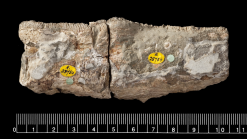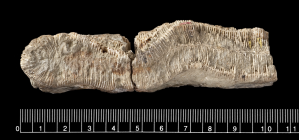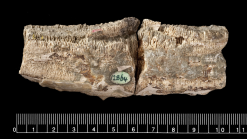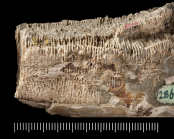WoRMS name details
Teleiophyllia Duncan, 1864
1290024 (urn:lsid:marinespecies.org:taxname:1290024)
unaccepted > junior subjective synonym
Genus
Teleiophyllia grandis Duncan, 1864 † accepted as Manicina grandis (Duncan, 1864) † (type by subsequent designation)
marine, fresh, terrestrial
Duncan PM. (1864). On the fossil corals of the West Indian Islands - Part II. <em>Quarterly Journal of the Geological Society of London.</em> 20: 20-45, pls. 2-5. [details]
Hoeksema, B. W.; Cairns, S. (2025). World List of Scleractinia. Teleiophyllia Duncan, 1864. Accessed through: World Register of Marine Species at: https://www.marinespecies.org/aphia.php?p=taxdetails&id=1290024 on 2025-04-05
![]() The webpage text is licensed under a Creative Commons
Attribution 4.0 License
The webpage text is licensed under a Creative Commons
Attribution 4.0 License
Nomenclature
original description
Duncan PM. (1864). On the fossil corals of the West Indian Islands - Part II. <em>Quarterly Journal of the Geological Society of London.</em> 20: 20-45, pls. 2-5. [details]
basis of record Wells JW. (1936). The nomenclature and type species of some genera of recent and fossil corals. <em>American Journal of Science.</em> 31: 97-134., available online at https://ajsonline.org/article/61464 [details]
basis of record Wells JW. (1936). The nomenclature and type species of some genera of recent and fossil corals. <em>American Journal of Science.</em> 31: 97-134., available online at https://ajsonline.org/article/61464 [details]
Taxonomy
source of synonymy
Budd, A.F., Johnson, K.G. (1999). Neogene Paleontology in the northern Dominican Republic 19: The family Faviidae (Anthozoa, Scleractinia) part II: The genera Caulastraea, Favia, Diploria, Thysanus, Hadrophyllia, Manicina and Colpophyllia. <em>Bulletins of American Paleontology.</em> 356: 1-83. [details]
Other
additional source
Duncan PM (1884) A revision of the families and genera of the sclerodermic Zoantharia, Ed. & H., or Madreporaria (M. Rugosa excepted). Journal of the Linnean Society of London, 18: 1-204. [details]
 Present
Present  Inaccurate
Inaccurate  Introduced: alien
Introduced: alien  Containing type locality
Containing type locality
From editor or global species database
Type designation Subsequent designation by Wells (1936) [details]



